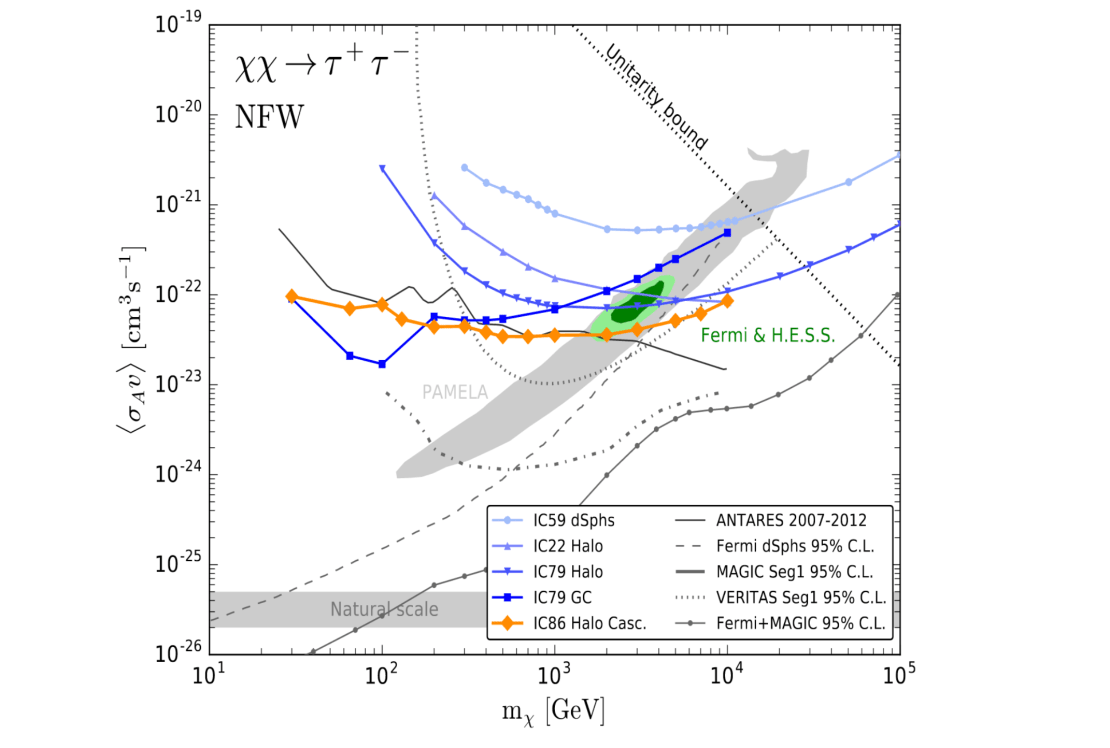IceCube searches for dark matter in the galactic center and halo have shown competitive results with other neutrino telescopes. IceCube has also searched for dark matter annihilations in the Sun that resulted in the world’s best limits for masses of around 100-200 GeV.
The IceCube Collaboration presents a new search for dark matter annihilation from the galactic center and halo using cascade events, i.e., particle showers created by the interaction of electron and tau neutrinos and Z-boson mediated muon neutrinos. Scientists searched for interactions starting in the DeepCore subarray between May 2011 and May 2012 and found no neutrino excess with respect to the background-only hypothesis, which allowed them to derive upper limits on dark matter candidates with masses between 30 GeV and 10 TeV. These results have been submitted today to the European Physical Journal C.

There are several theoretical models that predict the effects of the self-annihilation of WIMPs (weakly interacting massive particles), the dark matter candidate type tested in this study, in the Milky Way. A search using all neutrino flavors is more sensitive to models in which WIMPs annihilate preferably to leptons, i.e., creating a flux of electron and tau neutrinos. However, all-flavor searches can also test other WIMPs models.
IceCube researchers have used one year of data to test a new channel for dark matter searches, which resulted not only in an independent measurement but also improved previous IceCube searches for masses above 200 GeV and previous results from other neutrino telescopes for masses below 1 TeV. “This is another example of the rich physics possibilities that the DeepCore extension brought to IceCube,” says Carlos Pérez de los Heros, an IceCube researcher at Uppsala University and a corresponding author of this work.
The study is based on events that start inside the DeepCore subarray, which are selected by using surrounding IceCube strings as a veto region. This selection eliminates most of the atmospheric muon background. By using cascade-like events, the atmospheric neutrino background—made up of only muon neutrinos, which usually show up as a track—is also greatly reduced.
IceCube results, like those from other neutrino telescopes, are not yet competitive with atmospheric Cherenkov telescopes and gamma-ray satellites. However, neutrinos provide an alternative way to search for dark matter that is also much less dependent on the underlying dark matter distribution. Thus, IceCube results are more robust, and they also probe channels, e.g., the direct annihilation to neutrinos, that are not available to gamma-based detectors.
Info “All-flavour Search for Neutrinos from Dark Matter Annihilations in the Milky Way with IceCube/DeepCore,” The IceCube Collaboration: M.G.Aartsen et al, European Physical Journal C 76 (2016) 10, link.springer.com arxiv.org/abs/1606.00209